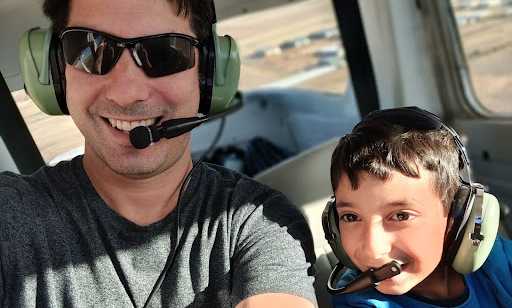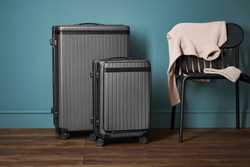Everything You Need to Know About Renting a Private Jet

Our evaluations and opinions are not influenced by our advertising relationships, but we may earn a commission from our partners’ links. This content is created by TIME Stamped, under TIME’s direction and produced in accordance with TIME’s editorial guidelines and overseen by TIME’s editorial staff. Learn more about it.
The vast majority of airline passengers will travel in economy class. While it can be uncomfortable, it will still get you there. The lucky few sitting in the front of an airline in business or first class will enjoy extra space, and a meal of varying quality. However, all passengers in commercial aircraft will be subject to the delays and hassles inherent in traversing a major passenger airport. They’re also subject to the whims of airline schedules, and the necessity of changing planes in order to reach a destination that has commercial service.
Unless you own your own aircraft, the only way to avoid these problems is to charter a private jet. I happen to be a commercially rated pilot and flight instructor. Over the last 20 years, I’ve flown over 1,500 hours, piloting private aircraft everywhere from Alaska to the Bahamas. And it doesn’t matter if you’re flying a single-engine piston trainer, or an intercontinental private jet, it’s always a thrill to avoid the large airline terminals and set your own schedule. I’ve flown scheduled charters to places like Jackson Hole Wyoming, and the passengers are always excited to arrive at the airport just moments before departure.
There are numerous benefits to chartering a private jet that you might not realize.
Private jets and other aircraft are part of a sector of air traffic called “general aviation,” which includes everything that’s neither commercial nor military. General aviation passengers and their baggage aren’t subject to the invasive security screening requirement imposed by the Transportation Security Administration (TSA).
This means that those flying in a private jet depart from separate terminals at the airfield that are not controlled by the government. These passengers are free to board their aircraft without presenting any identification or having their luggage scanned in any way. And so long as the pilot feels that in-flight safety isn’t compromised, they are free to carry-on liquids, firearms, pets or anything else that they choose. In this way, flying on a private jet is no different than riding in a limousine. In fact, passengers on general aviation aircraft are often driven directly onto the tarmac, and are dropped off within feet of their aircraft, moments before the doors are closed and the flight departs.
Private jets have access to exponentially more airports than commercial jets do. For example, there are over 5,000 public airports in the United States alone, yet only about 500 of them offer commercial airline service. The vast majority of this service is concentrated in about 50 major airports, with the vast majority of the other 450 receiving regular service to just a few major cities with just a handful of departing flights each day.
This system works just fine for passengers traveling between places like New York and Los Angeles or between Atlanta and Denver. But if you want to fly between two rural cities that have little or no commercial service, then it can be extremely time consuming. Travelers will typically face a long drive, followed by at least two connecting flights before reaching a destination airport that may also be several hours drive to reach their destination.
Even if everything works well, it could take an entire day, or longer to travel between two places in the United States. In contrast, a private jet could take off from a small field with no commercial service, and fly non-stop to any other airport in the continental United States in a matter of hours.
That’s why private jets are often used for travelers to visit numerous cities in just a day or two. For example, a technical team can use a private jet to visit several factories in a day, while a candidate for public office might be able to make several appearances in one day that would have been impossible with commercial air travel. And an executive can use a chartered jet to shave days off of a trip to visit employees in multiple states.
And when you fly on a private aircraft, your bags are unloaded and handed to you as soon as you land. This contrasts with the unreliable baggage service offered by the airlines, which often takes 30 to 45 minutes to deliver your bags to a carousel.
There’s no doubt that chartering a private jet is almost always more expensive than purchasing a single first class airline ticket. However, the advantages of using general aviation can often exceed the costs, especially when being used to transport multiple passengers.
For example, even a small private jet can seat four passengers, and a mid-size one can seat six or eight. With single, round-trip, first class tickets often selling for $1,500 or more, it’s easy to see how it can be more affordable for even a small team to fly on a private jet than to purchase first class commercial tickets. By comparison, a one to two hour flight on a small jet will cost about $5,000.
The economic case for private aircraft charters grows even stronger when you consider the productivity gains realized by avoiding the hassles of commercial airports, and the ground transfer times and costs that can be necessary when your travel is restricted to airports that are more distant than the local, general aviation airport might be.
Flying privately allows for vastly increased productivity. Teams can work on confidential matters in-flight, in ways that are impossible in a commercial aircraft. And even on the ground, many private jet terminals feature conference rooms that facilitate work much better than an airport terminal or even a business lounge.
The flexibility offered by a private jet is much closer to owning a car than it is to traveling on an airline. Travelers chartering a private jet can decide when and where the jets go, and they can change their mind at virtually any time. So if circumstances change during the middle of a trip, the private jet travelers can change their schedule or even choose a new destination. In contrast, airlines may not even have available seats when making changes at the last minute.
Owning and operating a private aircraft is extremely expensive, and managing the crew can be very time consuming as well. However, most private jet travelers opt to charter jets rather than own them outright. There are several different ways to charter a private jet.
In recent years, there have been several private jet operators that have begun selling flights on a per seat, or semi-private basis. You can think of semi-private flights as a hybrid between commercial airline service and a private jet charter. For example, passengers will depart from general aviation facilities rather than commercial airline terminals. This reduces or eliminates most of the hassles at the airports.
And while the comfort of these jets is similar to a first class airline seat, passengers still share their cabin with other travelers, and the schedule is fixed. Seats can be sold individually, and many companies offer subscription services. Companies that operate these kinds of services include JSX, Surf Air, XO and Aero.
If you need a truly private jet schedule and experience, then you need to charter your own aircraft. There are many companies that offer one-time charters including open marketplaces JetASAP, FlyJets, and Victor that search among a number of operators. And even the book by the seat operators will also offer one-time charters.
One of the most popular ways to repeatedly charter a private jet is through one of the larger aircraft fleet operators such as NetJets, Flexjet, Wheels Up and Vista Global. These companies offer a wide range of aircraft that can be chartered in several different ways. For example, you could become a fractional owner of an aircraft, which can work much like a timeshare of a property. Or you can purchase a private jet card that offers you credit for a fixed amount of travel time on a particular type of aircraft. Upgrading to a larger aircraft will consume more credit, while downsizing to a smaller one could extend your hours. This feature allows you to tailor your aircraft selection to your needs for any individual flight.
When chartering a private jet, it helps to know about different types of aircraft. At the bottom of the range are turboprops, and occasionally even piston aircraft. A turboprop uses a jet engine to spin a propeller, but it offers similar comfort and reliability as a traditional jet engined powered aircraft. While turboprops don’t have the same top speed as a true jet, the actual travel time will be similar on flights under 500 miles. Turboprops can also land and depart from much shorter runways than most jets, opening up additional airfields that may be more conveniently located to your destination.
| Aircraft | Range | Speed | Max Passengers |
|---|---|---|---|
Bombardier Global 5000 | 5,200 nm | 682 mph | 13 (7 sleeping) |
Gulfstream V | 6,000 nm | 767 mph | 15 - 19 |
Cessna Citation X+ | 3,460 nm | 608 mph | 12 |
XLS Gen2 | 1,848 nm | 507 mph | 12 |
Hawker 900XP | 2,733 nm | 520 mph | 8 |
Cessna Citation II | 1,998 nm | 464 mph | 6 - 8 |
Learjet 35A | 1,930 nm | 501 mph | 6 |
Citation M2 Gen2 | 1,550 nm | 465 mph | 7 |
Embraer Phenom 100 | 915 nm | 450 mph | 5 - 6 |
The next step up are very light jets, or VLJs. These aircraft have smaller cabins that can seat up to five passengers. The comfort is more like being in a limousine than a large jet, as some don’t even offer the space to completely stand up. These aircraft also have a limited range of about 1,000 to 1,200 miles, and often less with a full load of passengers and luggage. The Embraer Phenom 100 or Cessna Citation M2 are examples of this kind of aircraft.
Just a bit larger are light jets such as the Bombardier Learjet 35 or Cessna Citation II. These aircraft can fly six to eight passengers distances of 1,400 to 2,500 miles, and can include additional amenities such as an on-board lavatory.
Mid-size jets such as the Hawker Beechcraft 900XP or the Cessna Citation Excel can seat nine to eleven passengers and offer a range of as much as 5,000 miles. So-called super-mid-sized models like the Cessna Citation X offer larger cabins and other amenities that enhance inflight comfort. These jets can also offer significantly more speed than their smaller counterparts, or even a commercial airliner.
Heavy jets such as the Gulfstream V and Bombardier Global 5000 that carry over a dozen passengers and have global reach. Finally, there are executive airliners, which are the same aircraft used by airlines, but configured for private use. These planes are large and the most expensive to operate. What’s more, they aren’t able to land at hundreds of smaller airports that are accessible to a wider range of private aircraft.
There can be many factors associated with private jet charters, so the only simple way to figure out how much a specific charter will cost is to get a quote from an operator. However, you can get a feel for the costs of chartering specific classes of aircraft over certain distances.
After considering the basic hourly rates for different types of chartered private jets, there are other costs that you need to consider.
Flights to and from different destinations will have different costs. For example, if you are leaving from where the jet is based, the operator won’t have to ferry it to your departure airport. But if you need to be picked up from a remote location, then the operator will have to factor in the cost of relocating the plane there from its base or from the last location it was used.
Also, there are some high-traffic destinations that will add landing and handling fees that can increase the price. And keep in mind that your aircraft costs are based on the hours the aircraft is being operated, which includes taxi and takeoff time. Therefore, it’s in your interest to choose less crowded airports that will be less likely to have extended taxiing times.
If you want to charter a jet for a short, roundtrip flight, then you will have to pay for any overnight and parking fees imposed by the airport, You will also have to pay for crew time and expenses.
When chartering a jet for an international flight, there can be a variety of other fees including foreign permits, overflight fees, and customs. You should be sure to understand if these charges can be included in your charter price, or added on.
With the volatile price of jet fuel, many operators have begun adding fuel surcharges to the cost of their charters. You should always understand if any fuel surcharges will be added or if these are part of the price you’ve been quoted.
Many fractional and charter jet operators will impose membership and initiation fees, in order to receive access to the preferred pricing offered to members. It’s up to you to weigh these fees against the savings that you expect to receive.
While the costs of flying privately can be very high, there are always some things that you can do to lower the price you pay.
If you simply would like the experience of flying in a private jet from time to time, you can look into booking so-called empty legs. These are positioning flights operated by charter companies with no paying customers. Since these unsold flights must be flown, many operators are willing to sell the empty seats to passengers at a fraction of what it would cost to charter the jet.
The downside is that you don’t get to choose the origin or the destination, you just get to select from what’s offered. But otherwise, you can expect most or all of the service and amenities you might have received had you chartered the jet for thousands of dollars. Most of the major private jet charter companies offer empty leg options.
There are some premium travel rewards credit cards that offer some benefits when renting a private jet or becoming a member with a jet operator. For example, the American Express Platinum and Centurion cards offer its Premium Private Jet Program. This program features discounts on Wheels Up Connect and Core memberships. You can also receive a credit added to your Wheels Up account to use toward your first flight during your membership’s first year, depending on your selected Wheels Up Membership.
You need to reach out to a charter jet operator or jet services broker. Popular open marketplaces include JetASAP, FlyJets, and Victor.
There are companies that will sell single seats on semi-private jet flights that operate on a schedule. The price can be similar to first class airline travel, but the experience is much like flying private. Companies that operate these kinds of services include JSX, Surf Air, XO and Aero.
If you have the need and can afford to regularly fly privately, but you have no interest in purchasing and operating an aircraft yourself, fractional ownership may be your best option. Companies like NetJets, Flexjet, Wheels Up and Vista Global offer a wide range of aircraft that can be chartered by those that purchase a fractional jet ownership membership.
A private jet card is a way of pre-purchasing flight time on private aircraft at a pre-arranged price. Companies can sell jet cards to travelers with no long-term commitment, typically with a 25 hour minimum.
The information presented here is created by TIME Stamped and overseen by TIME editorial staff. To learn more, see our About Us page.



